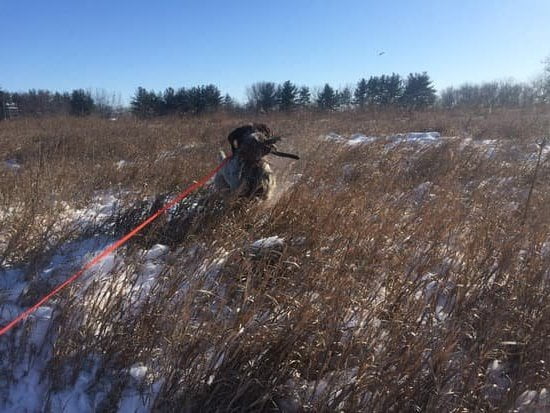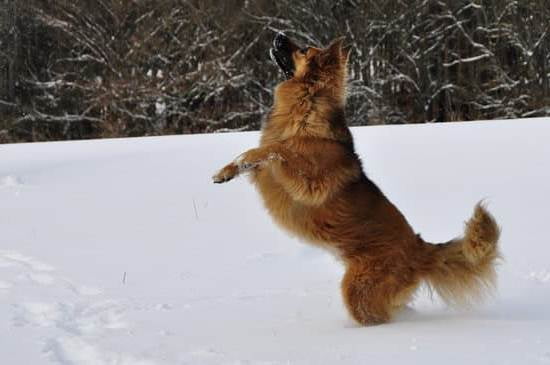Crate training can be an essential tool in helping your dog develop good behavior and provide them with a safe, secure space of their own. This article will guide you through the process of teaching your dog to go into a crate, from choosing the right crate to troubleshooting any resistance your pup may have.
Understanding the purpose of crate training is crucial for successful implementation, and this section will delve into the reasons behind using a crate as well as its benefits for both you and your furry friend.
When it comes to training a dog to go into a crate, understanding why it is necessary can make the process much smoother. We will discuss the importance of choosing the right crate size and material for your specific dog, as well as how to introduce them to the crate in a positive and gentle manner.
Making the crate a positive space through treats and toys will also be explored, along with using positive reinforcement techniques to encourage your dog’s cooperation.
In addition, we’ll address the gradual training process needed for successful crate training, emphasizing that patience is key. Finally, we’ll touch on consistency and routine in crate training, and how practicing these methods can lead to a well-trained dog who enjoys spending time in their crate. So let’s dive in.
Choosing the Right Crate for Your Dog
When it comes to crate training a dog, one of the most important aspects is choosing the right crate for your furry friend. The size and material of the crate can greatly impact your dog’s comfort and willingness to go into the crate.
It’s essential to select a crate that provides enough space for your dog to stand up, turn around, and lie down comfortably. A crate that is too small can make your dog feel cramped, anxious, and reluctant to use it.
Additionally, consider the material of the crate when making your selection. There are various options available, including plastic, wire, and soft-sided crates. Each type has its own benefits and drawbacks. For example, plastic crates may provide a more den-like environment that some dogs find comforting, while wire crates allow for better ventilation and visibility. Soft-sided crates are lightweight and portable but may not be suitable for dogs who tend to chew or scratch.
Before purchasing a crate for your dog, take accurate measurements of your dog’s height and length to ensure that you select the appropriate size. It’s also crucial to factor in your dog’s growth if they are still a puppy. By investing in a properly sized and suitable material crate, you can set a positive foundation for successful crate training with your dog.
Getting Your Dog Acquainted With the Crate
Introducing your dog to a crate can be a challenging process, but with patience and consistency, it can be a positive experience for both you and your pet. Here are some steps to help your dog become acquainted with the crate:
1. Choose the right location: Place the crate in an area where your dog spends a lot of time, such as the living room or kitchen. Avoid placing the crate in areas that are too isolated, such as a basement or garage, as this may cause your dog to feel lonely and anxious.
2. Make the crate inviting: Make the interior of the crate cozy and inviting by adding soft bedding or blankets. You can also entice your dog to enter the crate by placing some of their favorite toys or treats inside.
3. Let your dog explore on their own: Allow your dog to approach the crate on their own terms initially. Keep the door open and allow them to sniff around and investigate without any pressure.
Remember that every dog is different, so it’s important to be patient and understanding during this process. Forcing or rushing your dog into the crate can lead to negative associations, so allowing them to explore at their own pace is crucial for successful crate training.
Making the Crate a Positive Space
When it comes to crate training, making the crate a positive and inviting space for your dog is crucial. One effective way to do this is by using treats and toys. By associating the crate with positive experiences, your dog will be more inclined to go into the crate willingly.
Start by placing some of your dog’s favorite treats or toys near the crate, allowing them to explore and engage with these items. Once they are comfortable doing so, gradually move the treats and toys closer to the inside of the crate. This will help your dog become accustomed to entering the crate in order to access their beloved items.
Another method is to use treats as a reward for going into the crate voluntarily. Each time your dog enters the crate on their own or when prompted with a command, reward them with a treat and verbal praise. This positive reinforcement will create an association between entering the crate and receiving a reward, making it a more appealing place for your dog to be.
It’s important to remember that while using treats and toys can be highly effective, moderation is key. You don’t want your dog to only enter the crate when there are treats present. Gradually reducing the frequency of treat rewards as your dog becomes more comfortable with the crate will help ensure that they see it as a safe and enjoyable space without external incentives.
| Technique | Effectiveness |
|---|---|
| Using treats and toys to create positive associations | Highly effective in making the crate an inviting space |
| Rewarding voluntary entry into the crate with treats | Creates positive reinforcement for going into the crate |
| Gradually reducing treat rewards | Maintains long-term positivity towards the crate without external incentives |
Using Positive Reinforcement Techniques
When it comes to crate training your dog, positive reinforcement techniques are essential for making the experience a positive one. One of the best ways to encourage your dog to go into the crate is by using rewards such as treats and toys. By associating the crate with positive experiences, your dog will be more willing to enter the crate willingly, making the training process much smoother.
It’s important to choose treats and toys that your dog really enjoys. This could be small pieces of their favorite food or a special toy that they love to play with. By using high-value rewards, you’re more likely to see progress in getting your dog comfortable with going into their crate.
In addition to using treats and toys, verbal praise and encouragement can also go a long way in reinforcing good behavior. When your dog goes into the crate on their own or follows a command to do so, be sure to shower them with verbal praise such as “good boy/girl” or “well done.” This positive reinforcement will help create a strong association between going into the crate and receiving praise and rewards.
| Positive Reinforcement Technique | Benefit |
|---|---|
| Using treats and toys | Associate crate with positive experiences |
| Verbal praise and encouragement | Strengthens association between going into the crate and receiving praise/rewards |
Gradual Training Process
When it comes to crate training your dog, patience is key. It’s important to remember that every dog is different and will require varying amounts of time to get used to their new crate. This section will outline the gradual training process and provide tips on how to approach this aspect of crate training.
Start Slowly
It’s essential to start the training process slowly when introducing your dog to their crate. Begin by simply placing the crate in a common area of the house and leaving the door open. Allow your dog to explore the crate on their own terms, without any pressure or force. You can even place some treats or a favorite toy inside the crate to encourage your dog to investigate it further.
Encourage Positive Associations
As your dog becomes more comfortable with the presence of the crate, gradually start feeding them their meals near the crate. This will help create positive associations with the space and show your dog that good things happen when they are near or inside the crate. Avoid rushing this process and be patient as your dog becomes familiar with their new environment.
Incremental Progress
Once your dog is comfortable being near, and potentially eating near, their crate, you can start encouraging them to go inside. Use treats or toys to lure them into the crate, allowing them to come out at their own pace. It’s crucial not to rush or force your dog into the crate, as this can create negative associations with it. Incremental progress is key in ensuring that your dog feels safe and secure in their crate.
Troubleshooting
Dealing with resistance to crate training can be a challenging aspect of the process. Some dogs may initially show apprehension or fear towards their new crate, while others may exhibit anxious behavior when left alone in the enclosed space. However, with patience and understanding, it is possible to address and overcome these issues.
Identifying the Source of Resistance
One of the first steps in troubleshooting resistance to crate training is to identify the source of your dog’s discomfort. It could be that the crate is too small or cramped, causing physical discomfort for your pet. Alternatively, your dog may have had a negative past experience with confinement, leading to fear or anxiety when placed inside a crate. Understanding the root cause of your dog’s resistance can help in finding an appropriate solution.
Gradual Desensitization
If your dog shows signs of distress or aversion towards the crate, it is important to take a step back and proceed with gradual desensitization. This involves introducing the crate in small increments, allowing your dog to become familiar with and comfortable around it before attempting to encourage entry into the space. Gradual desensitization can help alleviate fear and anxiety associated with the crate.
Seeking Professional Help
In some cases, dealing with resistance to crate training may require professional assistance from a certified dog trainer or behaviorist. These individuals have the knowledge and expertise to assess your dog’s specific needs and develop a tailored plan for successful crate training. Seeking professional help can provide valuable insight and guidance for addressing any challenges encountered during the training process.
Practice Makes Perfect
Consistency and routine are essential when it comes to crate training your dog. By following a consistent schedule and maintaining a routine, you can help your dog feel more comfortable and secure in their crate. Here are a few tips for creating consistency and routine in crate training:
- Establish a regular schedule for meals, potty breaks, and crate time. Dogs thrive on routine, so by feeding them at the same times each day and taking them out for potty breaks on a regular schedule, you can help them predict when crate time will occur.
- Use the same cue or command every time you put your dog in the crate. Whether it’s “kennel,” “crate,” or another word of your choice, using a consistent cue will help your dog understand what is expected of them.
- Be patient and avoid making sudden changes to the routine. Dogs can become anxious or confused if their routine is suddenly disrupted, so try to stick to the schedule as much as possible.
Remember that consistency and routine are not only beneficial for crate training, but they also play a crucial role in overall obedience training for your dog. By providing structure and predictability in your pet’s daily life, you can help them feel more secure and well-adjusted.
Ultimately, the goal of consistent crate training is to create a positive association between your dog and their crate. By maintaining a predictable schedule and using positive reinforcement techniques, you can help your dog learn to love their crate as a safe and comfortable space. With patience and dedication to the training process, you’ll be able to enjoy the benefits of a well-trained dog and harmonious coexistence with their crate.
Conclusion
In conclusion, crate training can be a beneficial and harmonious experience for both you and your dog. By understanding the purpose of crate training, choosing the right crate size and material, and getting your dog acquainted with the crate using positive reinforcement techniques, you can ensure a smooth and successful training process.
It is important to make the crate a positive space for your dog by using treats and toys, and to be patient and consistent throughout the gradual training process.
By following these steps and remaining dedicated to crate training, you can enjoy the benefits of having a well-trained dog who is comfortable in their crate. Crate training provides a safe space for your dog when necessary, whether it’s during travel or when they need some alone time. Additionally, a well-trained dog can also alleviate any stress or concerns about destructive behavior when left unattended at home.
Ultimately, by investing time and effort into crate training, you can establish harmony between you and your dog. Consistency and routine are key in creating a positive association with the crate, so remember to practice regularly. With patience and dedication, both you and your furry friend can enjoy the many advantages of a well-trained dog who is comfortable in their own cozy space.
Frequently Asked Questions
How Do You Train a Dog to Go to a Dog Crate?
To train a dog to go to a dog crate, you can start by making the crate a positive and inviting space. Use treats or toys to lure the dog into the crate, and once inside, offer praise and reward.
Gradually increase the time the dog spends inside the crate, always using positive reinforcement. You can also feed your dog meals in the crate to associate it with something positive.
What if My Dog Refuses to Go in His Crate?
If your dog refuses to go in his crate, it’s important not to force him as this may create a negative association with the crate. Instead, work on making the crate a more appealing space by adding comfortable bedding, offering special treats inside, and using calming pheromones if necessary.
Additionally, practice short training sessions where you gradually build up your dog’s comfort with being in the crate.
At What Age Is It Too Late to Crate Train a Dog?
It is not necessarily too late to crate train a dog at any specific age; however, it may be more challenging with older dogs who have not been exposed to crates before. With patience and consistent training methods, even older dogs can learn to be comfortable in a crate.
It may just take more time and effort compared to training a younger dog. Remember that every dog is different, so there is no definitive age when it becomes too late for crate training.

Welcome to the blog! I am a professional dog trainer and have been working with dogs for many years. In this blog, I will be discussing various topics related to dog training, including tips, tricks, and advice. I hope you find this information helpful and informative. Thanks for reading!





